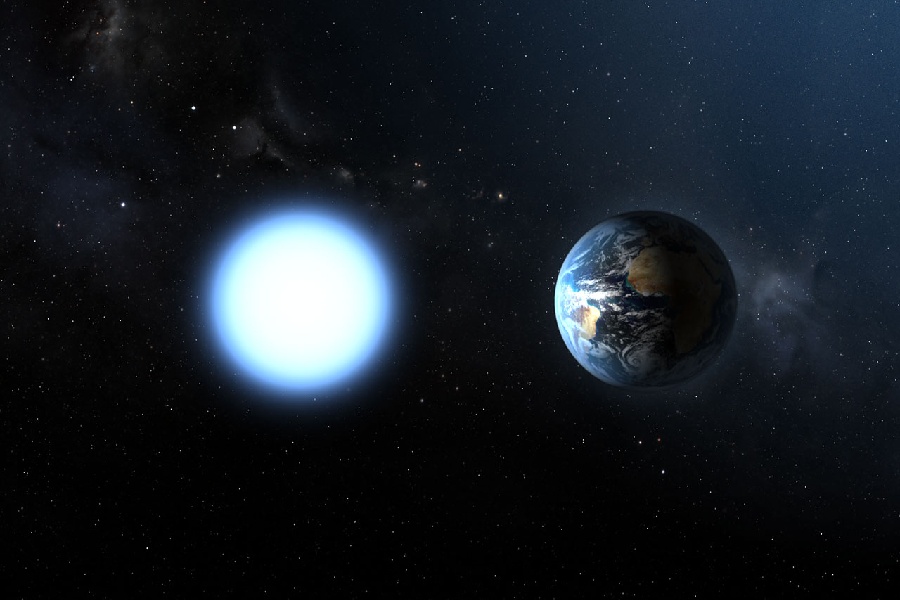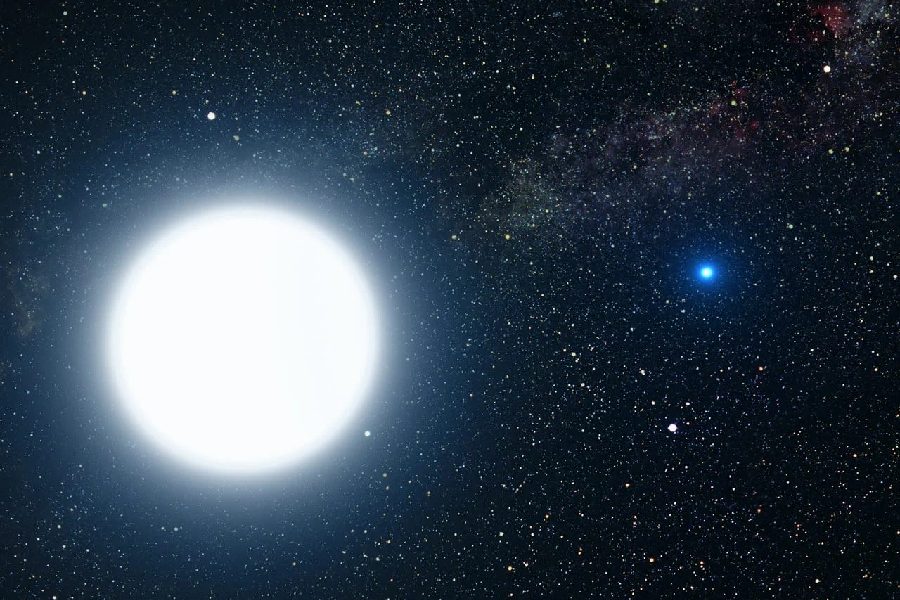Sirius, the brightest star in our night sky, has fascinated humanity across numerous cultures for thousands of years. But what really is this sparkling point of light that has inspired so much myth and mystery? What kind of star is Sirius?
You have probably seen this star lighting up the heavens on a dark, clear night. Yet there are some surprises in store when you examine this famous star more closely.
We will dive deeper into the details of Sirius star size, age, and origins that challenge assumptions and invite a deeper look. We will explore what stellar type Sirius belongs to and how this reveals key insights about the star’s inner workings.
From its brightness to its lifecycle, getting to know the full picture of Sirius sheds light on broader principles of stellar classification and the lives of stars across the cosmos. Unraveling what kind of star is Sirius leads us through an illuminating journey to the foundations of our universe.

What Kind of Star Is Sirius?
What kind of star is Sirius? Sirius is a bright star in the night sky, often called the “Dog Star”. It’s part of the constellation Canis Major. Sirius is a binary star system, meaning it consists of two stars orbiting each other.
The main star, Sirius A, is larger and brighter, while Sirius B is smaller and fainter. Close to Earth, Sirius stands out with its brilliance. Its association with the dog constellation has made it significant in various cultures and traditions throughout history.
The Sirius Binary Star System
Main sequence stars generate energy by fusing hydrogen into helium in their cores. Specifically, Sirius A is a type A1V star. The A indicates it has a blue-white color. The V shows that Sirius A is in the main sequence.
Sirius A has a surface temperature almost twice as hot as the Sun. It is 17,430°F. Sirius A is also over 20 times more luminous than the Sun.
In contrast, tiny Sirius B belongs to a very different class known as a white dwarf. White dwarfs are essentially stellar remnants. They have exhausted their nuclear fuel supplies long ago. But with incredibly high densities, they can still emit radiation leftover from prior stages. Sirius B has an estimated mass over 98% that of our Sun but a petite size like Earth.
The pair of stars forms a dramatic binary system that has intrigued sky-watchers for ages. They orbit each other once every 50 years at an average distance of about 20 times the Earth-Sun separation.
Sirius A’s brilliance makes it stand out. Sirius B’s diminutive flickering adds to its charm. Together, they make Sirius the brightest star pattern in the night sky.
Sirius A – Main-sequence star
Sirius A is categorized as a main-sequence star, meaning it is currently fusing hydrogen into helium in its core to produce energy. Main-sequence stars lie along a spectral classification system that correlates to their mass, brightness, temperature, and other properties.
Specifically, Sirius A has a spectral type of A1V, placing it on the so-called main sequence part of the classification diagram. The A1 conveys that it is highly luminous. It has a bluish white color due to an extremely hot surface temperature of over 17,430°F.
The 1 indicates Sirius A has an estimated mass over twice that of our Sun. So, despite being the main sequence, Sirius A is much more massive, hot, and intrinsically brilliant than the Sun. The V simply affirms that core hydrogen fusion is still ongoing.
Overall, Sirius A’s A1V classification reveals key facts. It is a significantly bigger star than our Sun. It is also a more powerful hydrogen-burning star than our more humble, yellow-tinged Sun.

Sirius B – White dwarf companion
Sirius B is classified as a white dwarf, which is essentially the leftover remnant of a star that has exhausted its nuclear fuel. White dwarfs are supported by the quantum mechanical properties of electron degeneracy pressure. This allows them to avoid further gravitational collapse.
Sirius B has a spectral type of DA2, indicating it has a hydrogen-rich atmosphere with strong hydrogen spectral lines present in its radiation. The DA2 reveals Sirius B lands on the hotter end of the DA category.
It has an estimated surface temperature of around 44,900°F, making it one of the hottest known white dwarfs. Sirius B is no longer generating any fusion energy. But its prior history as a main sequence star left Sirius B. It has stored thermal energy that is slowly radiating out.
This process occurs from its contracting and cooling core. With this radiated heat from its prior stage, the tiny, dense Sirius B will continue glowing for many billions of years to come.
Binary System Dynamics
The Sirius system consists of Sirius A and its smaller white dwarf companion, Sirius B, orbiting around each other once every 50 years. They have an orbital separation of about 20 times the distance between our Sun and Earth.
Studies show this binary configuration formed when Sirius B initially expanded into a red giant phase and filled what’s called its Roche-lobe. This triggered a transfer of mass over to Sirius A.
This continued until Sirius B lost so much of its outer envelope that only its remnants remained as the dense white dwarf seen today. Currently, the Sirius system is in a very stable arrangement, with no ongoing transfer between the pair.
Sirius A and B’s orbits are expected to fluctuate somewhat over the next 210 million years but remain reliably bound together over this timeframe. What we see today is a hot, bright main sequence star periodically circled by the tiny leftover core of its former red giant companion.
This gravitational dance between Sirius A and B has persisted for millions of years already, since their prior era of active mass transfer when the original Sirius B star evolved into a red giant. Sirius star color can help you distinguish between both Sirius star A and star B in the system.
Brightness and Visibility
Sirius appears brighter in Earth’s night sky than any other star, earning it the moniker “Dog Star”. Its prominence results from the combination of Sirius luminosity over 20 times that of our Sun and its proximity at just 8.6 lightyears from Earth.
Sirius has an apparent visual magnitude of -1.46, whereas the next brightest star, Canopus, registers at just -0.74. This means Sirius gives off far more radiation in visible wavelengths.
Sirius’ brilliance, paired with turbulence in Earth’s atmosphere, leads it to vividly twinkle when observed. Additionally, it flashes dramatically at times.
The binary nature of the system adds to this effect, with tiny, dense Sirius B periodically passing in front of larger Sirius A. This temporarily dims the luminance of Sirius A. Altogether, these factors make Sirius stand out starkly as the most noticeably bright and variable star in the nighttime sky.
Conclusion
What kind of star is Sirius? As explored, Sirius is a binary system, composed of a still stable Sirius A and white dwarf remnant Sirius B. Despite a 50-year orbital dance, their natures starkly contrast, with asymmetry driving recognition.
Sirius A dominates in luminosity due to stable hydrogen fusion, while Sirius B has collapsed into a small, faint husk. Overall, Sirius contains intrinsic variances from binary evolution, with one member dying while the other sustains normal function. These variances enable Sirius to captivate sky-watchers as the night’s brightest star.
Though the dual stars reside over eight light-years beyond Earth, from our vantage point, their joint glow culminates as an astronomical wonder visible across profound cosmic distance – a shining beacon incorporating diverse stages among the stars in the eternal canvas of the galaxies.
